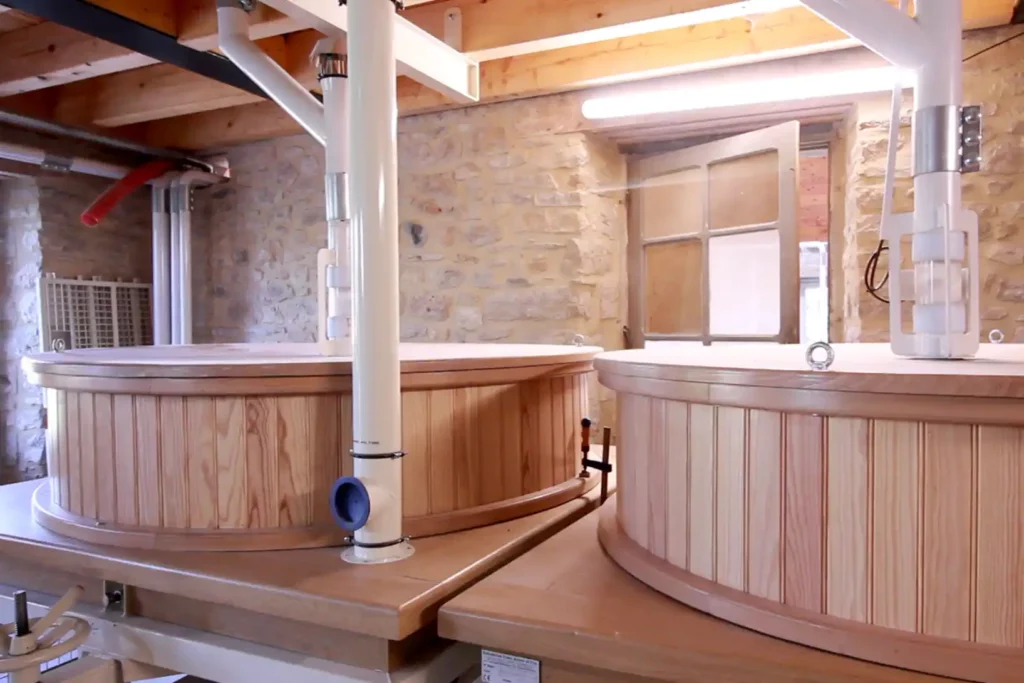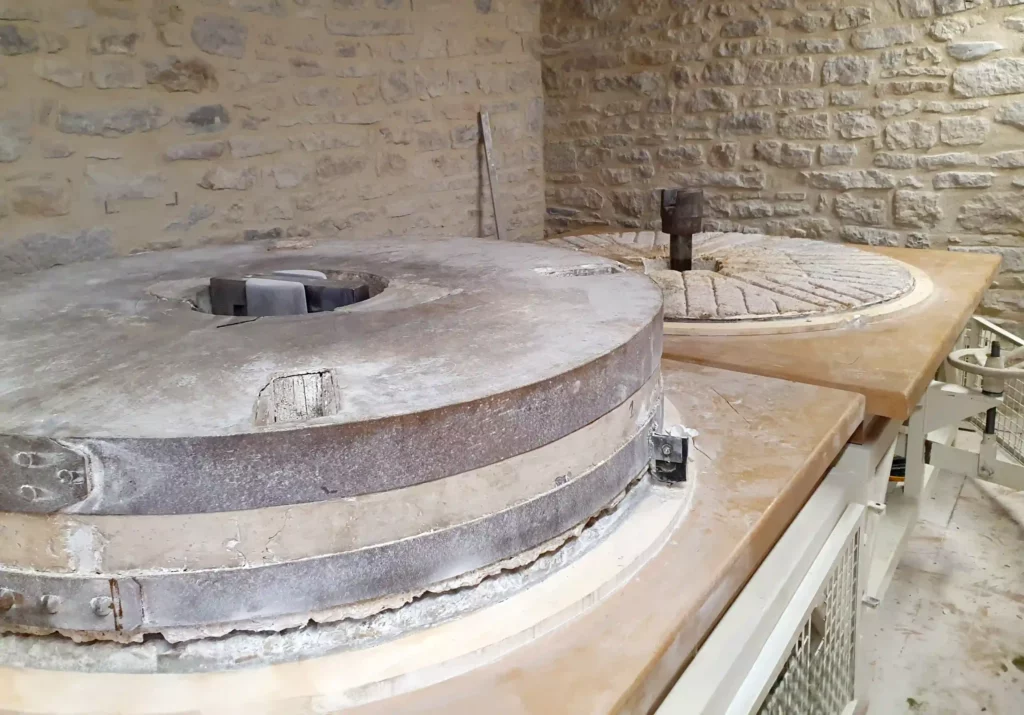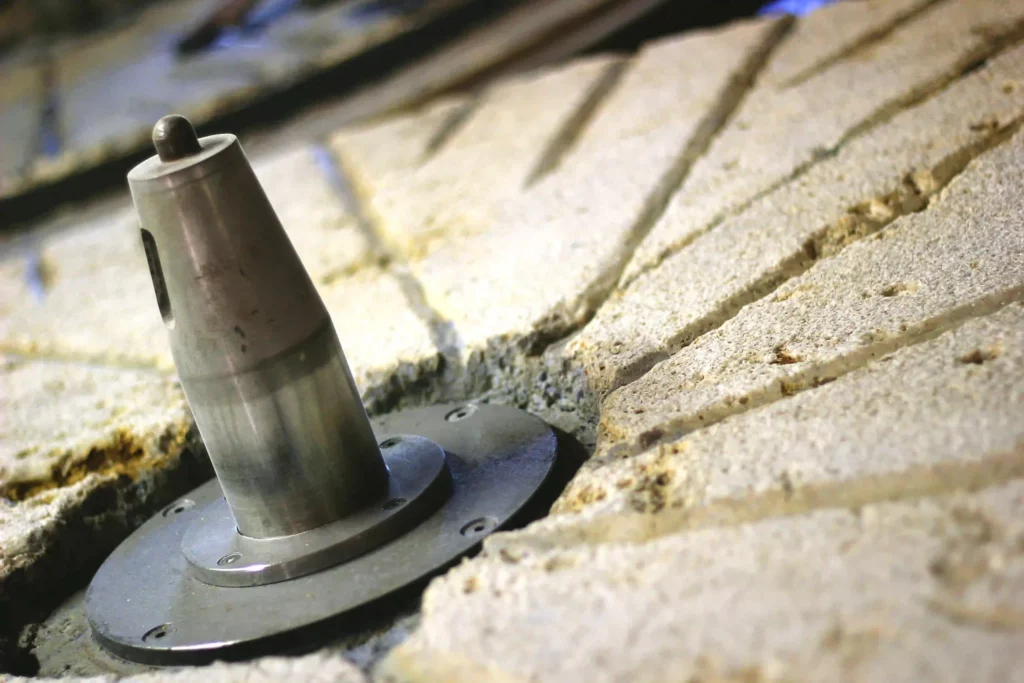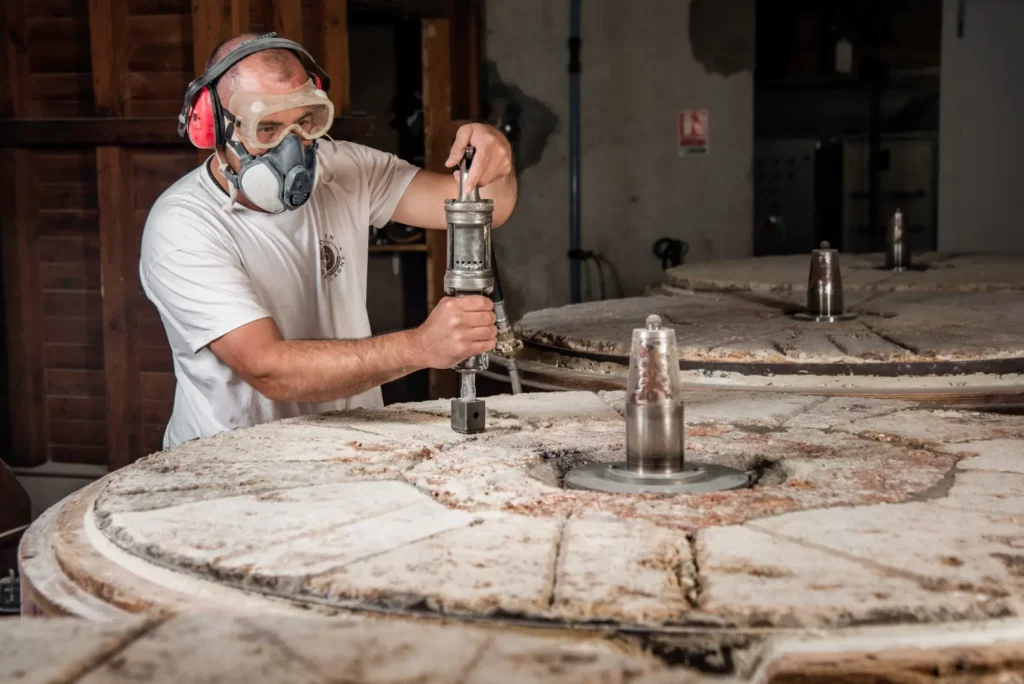How do Millstones work?
Stone milling is a traditional milling method that has been used for thousands of years to transform grain into flour. It consists of two stone millstones, which are placed one on top of the other. The lower millstone, known as the ‘standing millstone’, remains fixed, while the upper millstone, known as the ‘running millstone’, rotates by means of a mechanism.
The stone millstones at Moulin de Colagne are made of flint and come from La Ferté sous Jouarre. La Ferté sous Jouarre, the historic cradle of milling, perpetuates a centuries-old heritage of craftsmanship. These millstones illustrate the centuries-old heritage of this town renowned for its millstone. In the past, this stone powered mills all over the world, making La Ferté-sous-Jouarre a vital centre of the milling industry. Today, these millstones preserve this ancestral tradition, providing a culinary experience steeped in the region’s history and know-how.
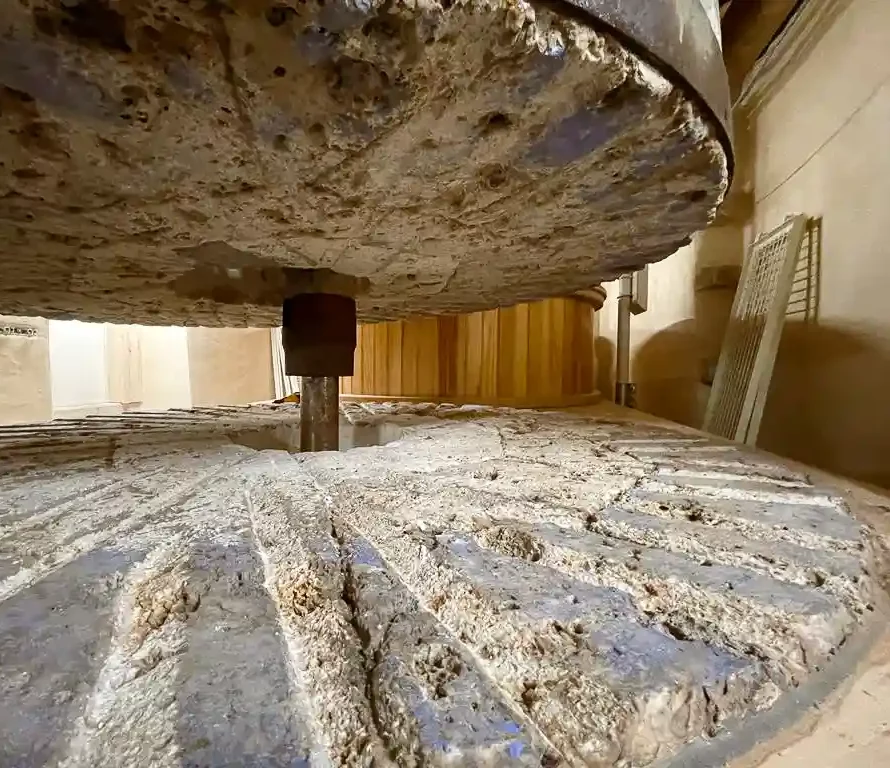
How is stone-ground flour made?
The stone-grinding process is simple but effective. The grains (once cleaned) are fed between the two millstones, where they are crushed and slowly ground. The running millstone is activated, causing the grains to rotate and grind between the two millstones.
Unlike modern milling methods, which involve high temperatures that damage the grains. Stone milling is a slow, gentle process. Stone millstones maintain a low temperature by rotating at a moderate speed. This preserves the essential nutrients and flavours contained in the grains.
But this is just one of the steps involved in making flour. After grinding on a stone millstone, our flours then go through the SODER system.
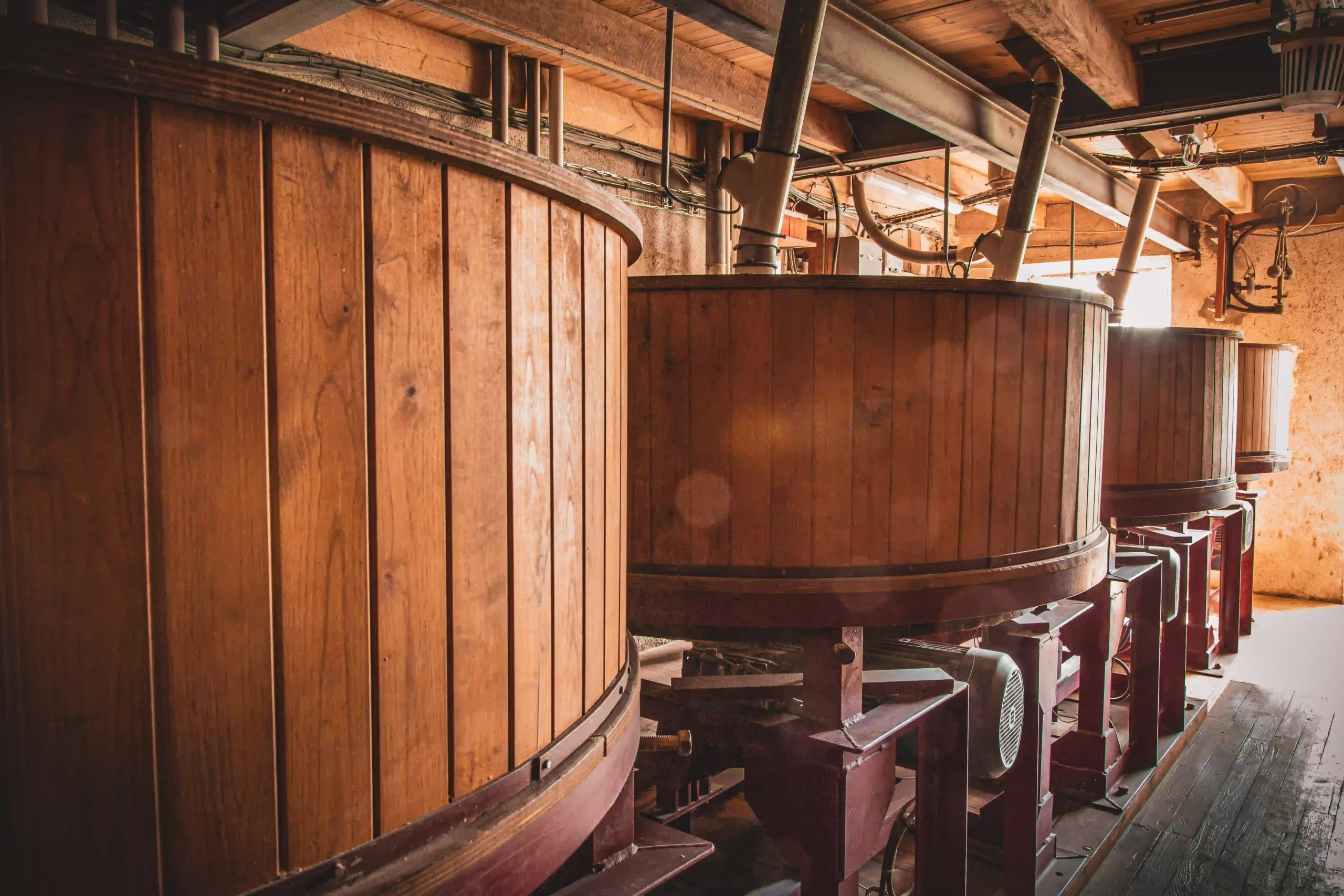
The advantages of stone-ground flour:
Stone-ground flour is outstanding by a series of unique characteristics that bear witness to its quality.
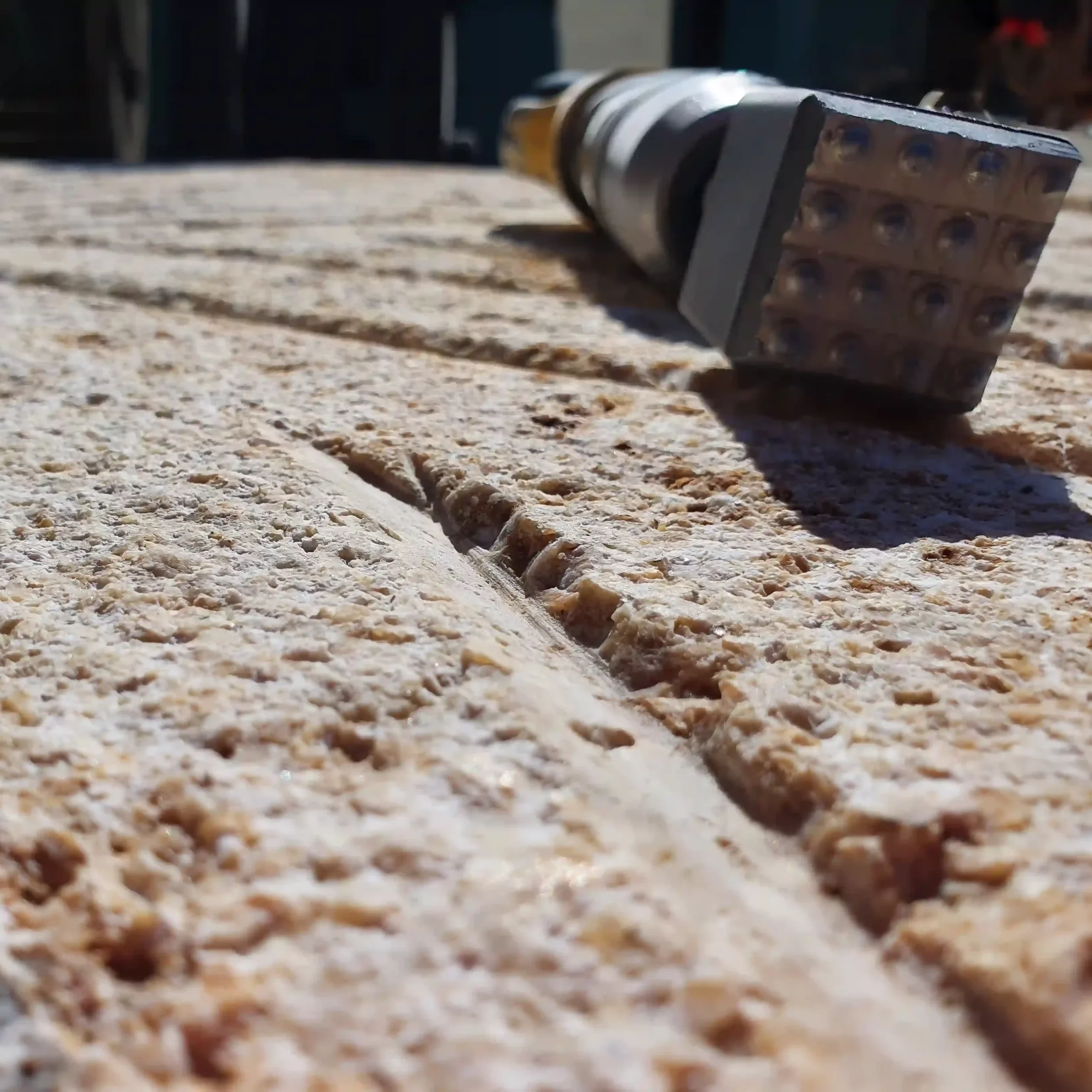
Uniform colour and fine texture: Stone-ground flour has a uniform colour without pitting, ranging from a pronounced creamy hue to a subtle grey, depending on the type of grain. Its finer grain size gives it a delicate texture, ideal for creating breads and pastries.
Balanced gliadin/glutenin ratio: Compared with cylinder flour, stone-ground flour has a slightly higher ratio of gliadins to glutenins. This balanced ratio contributes to the structure and texture of bakery products, while providing better digestibility.
Nutritional richness: Stone milling preserves essential nutrients such as fibre, protein and minerals naturally present in the grain. As a result, the flours obtained have a higher nutritional value.
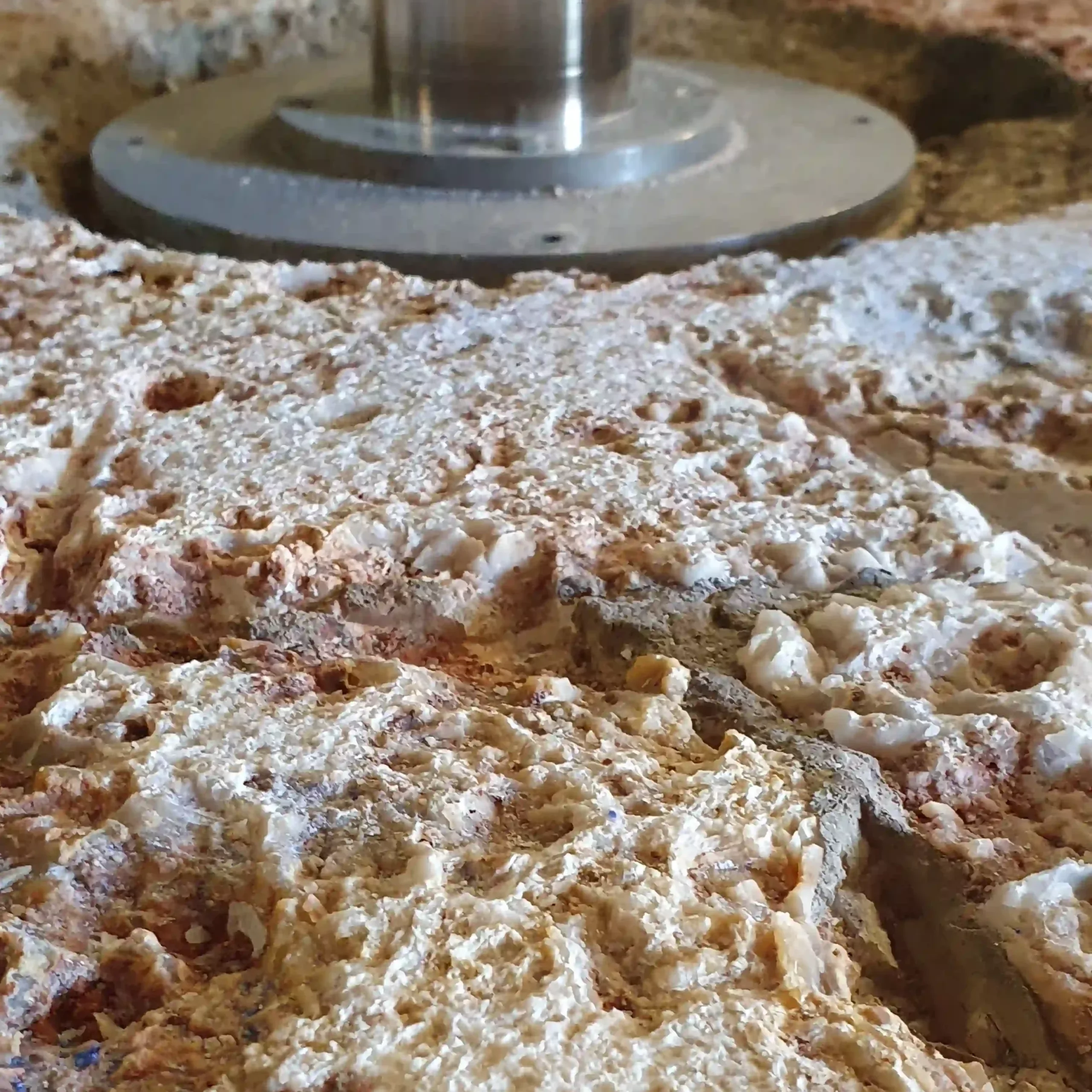
Authentic flavours: this milling technique preserves the authentic flavour of the grain, giving the flour a unique taste and texture. As a result, your creations have an incomparable aromatic richness and offer a unique tasting experience.
Exceptional texture: Flour produced by stone millstones has a finer, more homogenous texture and better water-holding capacity. This helps to create breads with a soft, well-structured crumb and a crisp crust.
Sustainability and respect for tradition: By opting for stone-ground flour, you are perpetuating and supporting a centuries-old tradition, while helping to preserve sustainable, environmentally-friendly production methods. This process requires less energy and generates less waste.
Stone-ground flour, combined with the SODER system, embodies the very essence of tradition, flavour and quality. Thanks to its gentle milling process and nutrient preservation, it offers an unrivalled culinary experience.
